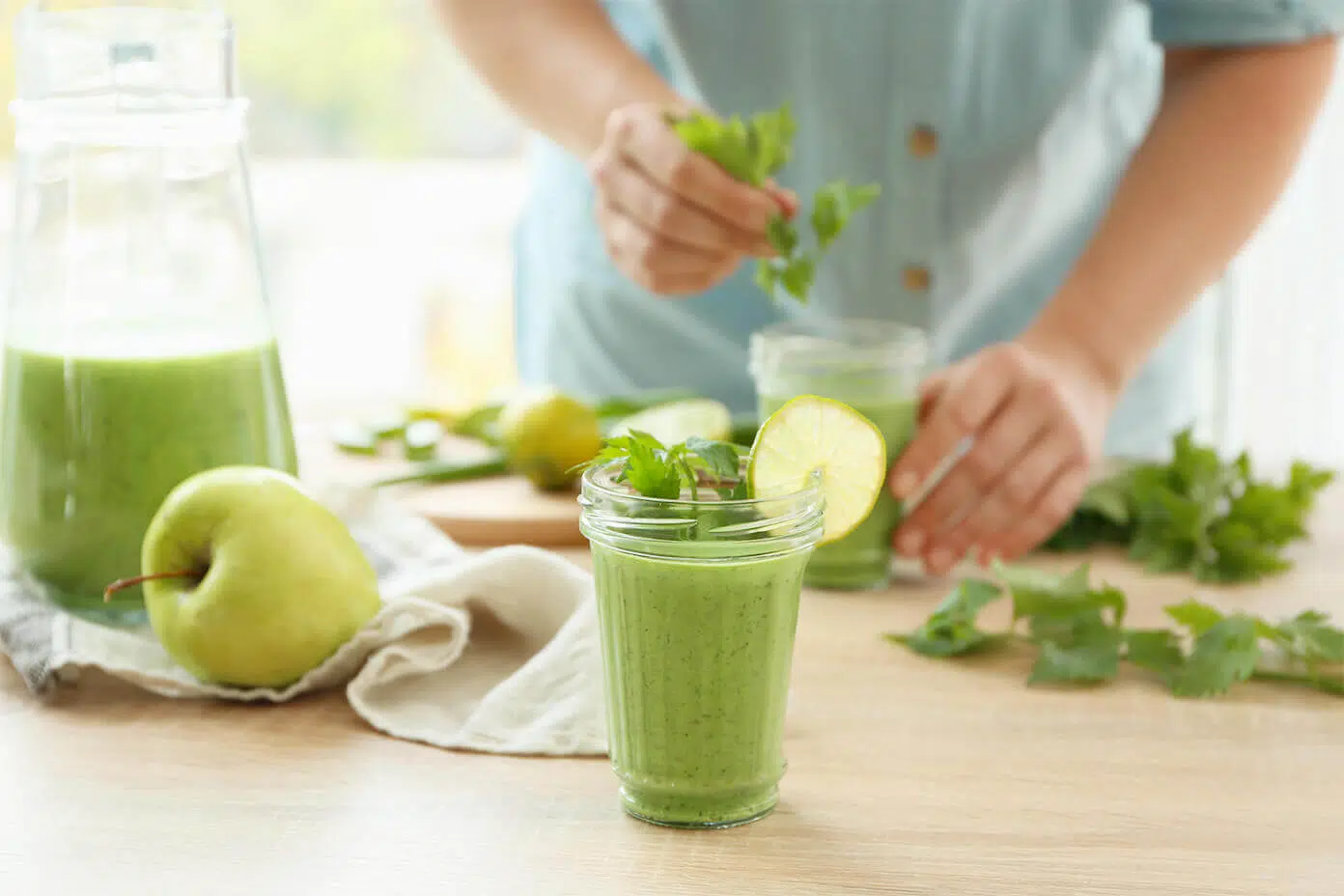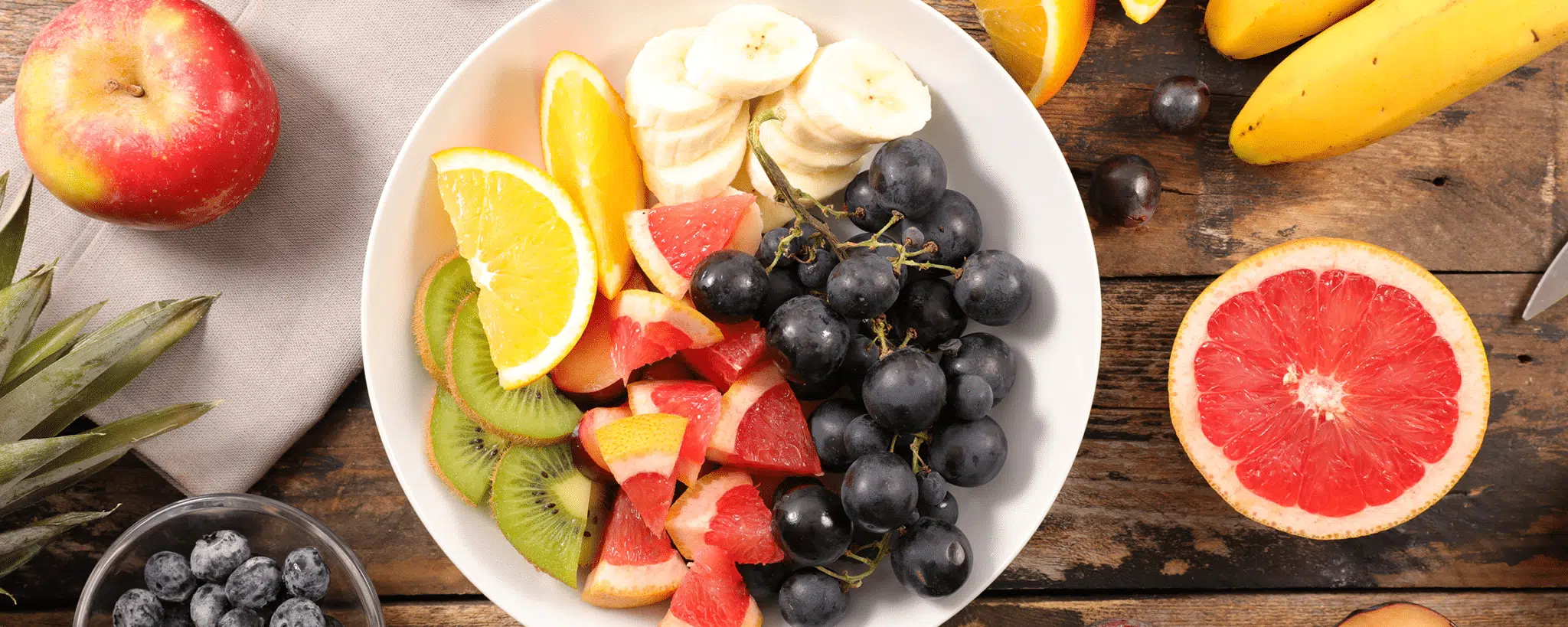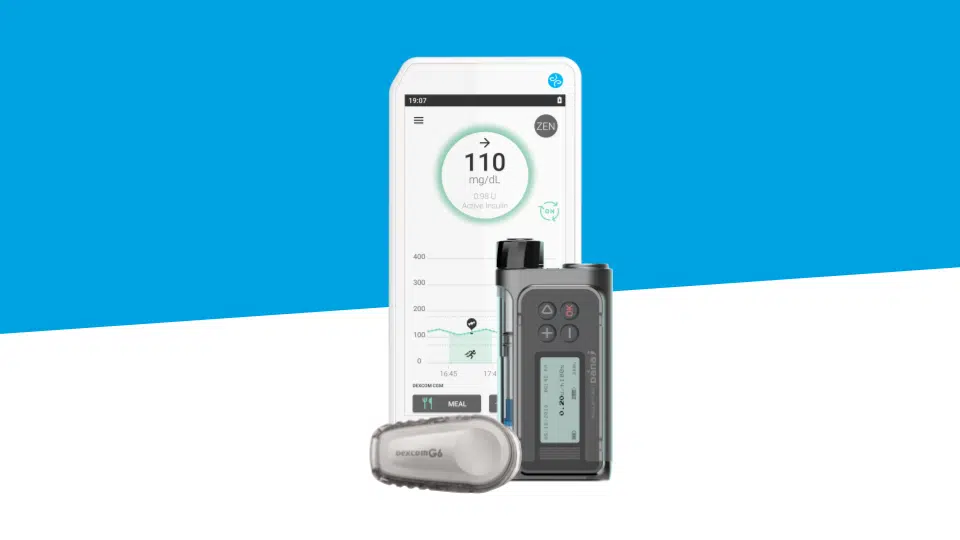
Type 1 diabetes and detoxes: facts and fake news
Detox recipes abound on the web and in health magazines, and it is very tempting to follow these tips. It’s not easy to choose when faced with so many options, and sometimes it’s not easy to balance them with Type 1 diabetes either.
Why would you want to do a detox, and how do you go about it?
What are we looking for in a detox?
When we decide to do a detox, our goals are usually to:
- eat healthier,
- cleanse the body,
- get rid of toxins in the body.
Toxins are so-called toxic substances, produced by the body in which they cause disease. One of the roles of the liver, kidneys and our immune system is to eliminate them.
How do you go about doing a successful detox with Type 1 diabetes?
Nothing will benefit your body more than adopting a healthy lifestyle. And that means:
1/ Eating healthy
Adopting a healthy diet means limiting the sugars and salts added to food, as well as ready-made and ultra-processed dishes.
Eating at least 400 g of fruit and vegetables a day1 is not just an advertising slogan. Fruit and vegetables are essential for providing the vitamins and nutrients the body needs to function properly. You should eat everything and in reasonable quantities. For lunch, your ideal plate would be half vegetables, a quarter starchy food and a quarter protein. A dairy product and a piece of fruit would perfectly round off this meal. If you are vegetarian or vegan, it is essential that you provide your body with plant-based protein to compensate for the lack of animal protein.
Whenever possible, try to choose seasonal fruit and vegetables. The reason cabbages and leeks are grown in autumn and winter is to provide the fiber needed to cleanse the digestive system of fat that will help us fight off the cold. Tomatoes grow in the summer because they have tremendous moisturizing power.
If you are a fan of buying locally grown produce, even better!
2/ Engage in regular physical activity
Generally, the recommendations are to:
- spend 2 to 5 hours per week doing one or more moderate intensity endurance activities;
- do moderate or higher intensity muscle strengthening activities at least twice a week2.
This is great for your whole body. You’ll work your cardiovascular system, increase your lung capacity and build muscle in certain parts of your body. All this will strengthen your immune system. Your body will only be better equipped to defend itself against viruses and bacteria.
3/ Limit excesses
Needless to say, tobacco is not the best thing for your health3.
For alcohol, it is recommended that you limit yourself to a maximum of four drinks per occasion, and not every day4.
As for overeating, try to limit it over time. Don’t feel guilty about a long family meal, just enjoy it! The following days’ meals will simply be lighter and more balanced. More generally, allow yourself to “cheat” one day a week. Food gives your brain a feeling of pleasure, so don’t deprive yourself!
No magic detox recipes, then?
On the face of it, doing a detox should not harm your body. But their health benefits have never been scientifically proven.
If your detox consists of eating only one type of food for several days, you run the risk of developing deficiencies. If you were healthy before the detox, these deficiencies will go unnoticed because they will disappear once the detox is over. However, this can be risky if you already have a few health concerns. If your detox consists of drinking a juice with certain foods every day, but your meals are not balanced, there’s no point. On the other hand, if you try some detox recipes as a complement to a healthy lifestyle, this will supplement your body’s needs.
While there is no such thing as a miracle detox recipe, there are some foods that are said to be beneficial to the body. Here is a non-exhaustive list5:
| Apricots | Give a healthy glow |
| Garlic | Protects the cardiovascular system |
| Lemons | Help with poor digestion |
| Cabbage | Prevents certain diseases
Has anti-constipation properties |
| Spinach | Facilitates intestinal transit |
| Lentils | Provide large amounts of protein |
| Honey | Activates healing and strengthens the immune system |
| Blueberries | Good for your eyesight |
| Pears | Have antioxidant properties |
| Apples | Absorb sugars and fat during digestion |
| Potatoes | Have antioxidant properties |
| Tomatoes | Hydrate and lower blood pressure |
Each fruit, vegetable, spice, condiment or other food has its own properties and health benefits. The key is to consume them correctly and in sufficient quantity.
Eat a bit of everything!
What about Type 1 diabetes?
As usual, you adapt your diabetes to your lifestyle.
Will your meal be rather light? Adjust your bolus or rapid insulin dose.
If you are changing your eating habits, your T1D will also need time to adjust. Don’t panic! After a few days, you will know how to manage your insulin intake according to your new meals. If your routine becomes regular, your insulin intake will also become very regular, and you will be better able to adapt to exceptional situations.
The secret of detoxing, therefore, lies in a healthy lifestyle and, above all, a balanced diet. In any case, do not hesitate to discuss dietary changes with your doctor or a nutritionist/dietician.
References
- https://www.who.int/news-room/fact-sheets/detail/healthy-diet
- https://www.who.int/news-room/fact-sheets/detail/physical-activity
- https://www.who.int/news-room/fact-sheets/detail/tobacco
- Recommendations of the World Health Organization
- Sophie Lacoste, ‘Ma bible des aliments remèdes’, Editions Leduc.S Pratique, 2018







